MARIANI’SVirtual
Gourmet
March 17,
2013
NEWSLETTER
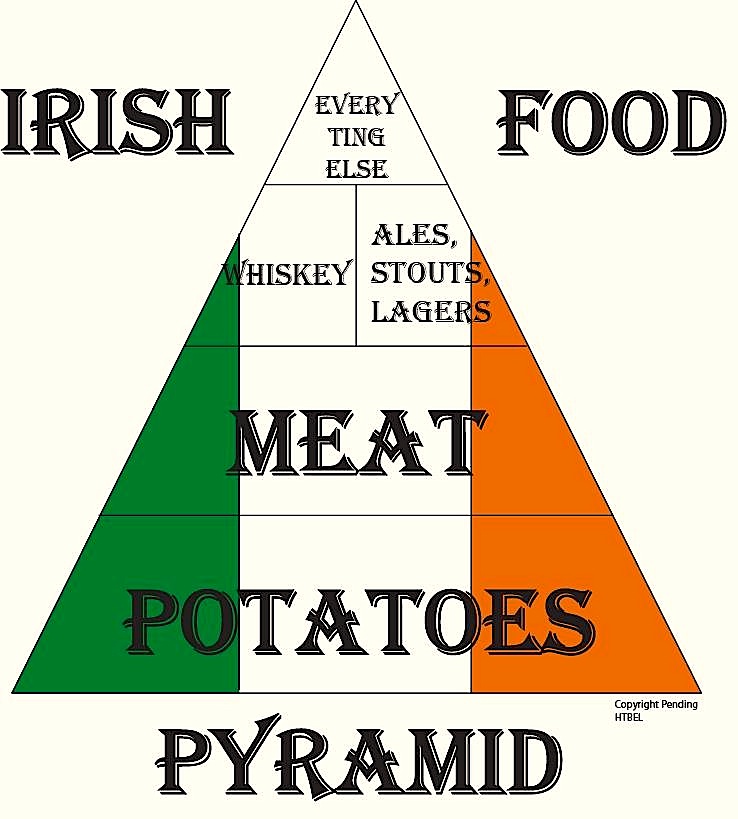

ANNOUNCEMENT: John
Mariani will be part of two events at the Tennessee
Williams Festival, to be held March 20-24. On
Friday, at
5:30 P.M.: "RESTAURANT SCOOP FROM THE VIRTUAL
GOURMET," wine, wit, and hors d’oeuvres. Mariani, a
food columnist for Esquire, will give the scoop on
the latest national restaurant trends. Windsor Court
Hotel, 300 Gravier Street, limited seating, $40.
Sponsored by the Windsor Court Hotel. Sunday March
25: 11:30 A.M. "NEW ORLEANS FOOD MEMORIES ":
The Pelican Club Restaurant, 312 Exchange Alley, $25
limited seating. Sponsored by The Pelican Club
Restaurant. For Festival Tickets click here.
IS
GREENVILLE, SC, THE SOUTH'S BIG NEW FOOD CITY?
By John Mariani
NEW
YORK CORNER
Italian in Westchester
by John Mariani
Notes from the Wine Cellar
Spain’s Vega Sicilia
Holds Its Own Against Bordeaux Wines
by John Mariani
❖❖❖
IS GREENVILLE, SC, THE SOUTH'S NEXT BIG FOOD CITY?
By John Mariani
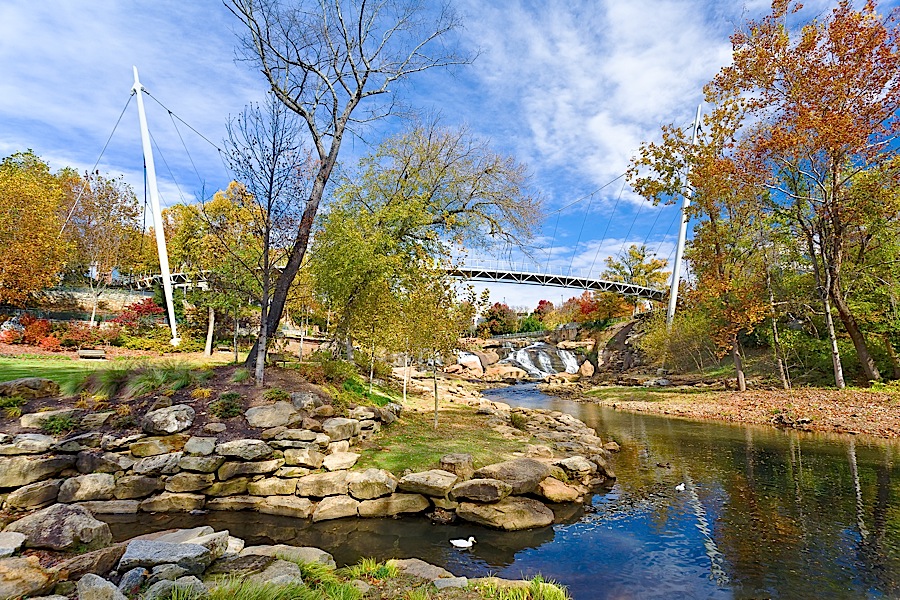
With big cities Atlanta, still lacking in
Southern soul, and Nashville, finally
capitalizing on its Music City heritage, and
Savannah jockeying to be queen of historic
beauty, with all of them battling it out to be
the South’s best food city, a smaller, more
interesting competition is going on between two
South Carolina smaller cities—Charleston and
Greenville, and despite the former’s
gastro-surge and national media hype over of the
last three years, Greenville is gaining fast.
 Greenville has been called the
"#1 North American City of the Future, 2009.” The
source of that assessment, Foreign Direct
Investment, is not
without reason: thanks to BMW's and
Michelin's setting up their North American
headquarters here, the highest per capita foreign
investment in the U.S.is here. (You
may in fact put yourself behind a BeeMer on a
track at the company's Performance Center, and
Michelin has its own merchandise store downtown.)
The city is also home to the International
Center for Automotive Research, The
Center for Emerging Technologies, Lockheed
Martin Aircraft and Logistics Center,
3M, Honeywell,
Caterpillar Inc.,
and , General Electric.
all of them pouring millions into Greenville’s
development, charity and the arts.
Greenville has been called the
"#1 North American City of the Future, 2009.” The
source of that assessment, Foreign Direct
Investment, is not
without reason: thanks to BMW's and
Michelin's setting up their North American
headquarters here, the highest per capita foreign
investment in the U.S.is here. (You
may in fact put yourself behind a BeeMer on a
track at the company's Performance Center, and
Michelin has its own merchandise store downtown.)
The city is also home to the International
Center for Automotive Research, The
Center for Emerging Technologies, Lockheed
Martin Aircraft and Logistics Center,
3M, Honeywell,
Caterpillar Inc.,
and , General Electric.
all of them pouring millions into Greenville’s
development, charity and the arts.
The Greenville County Museum of Art (left) feature
works by Jasper
Johns, Andy Warhol, Georgia O'Keeffe, and more than two dozen
paintings by Andrew Wyeth, who called this "the
very best collection of my watercolors in any
public museum in this country." There is a
performing arts center and little theater in
Greenville, too. The city holds a Shakespeare
Festival in the summer, a Pumpkin Festival in the
fall, and when I visited on a bright late winter
day, a mini-marathon was in full flow throughout
the downtown area.
What is
really amazing is that within a mile-and-a-half
stretch of Main Street, there are now more than
110 restaurants, overwhelmingly locally owned,
including a
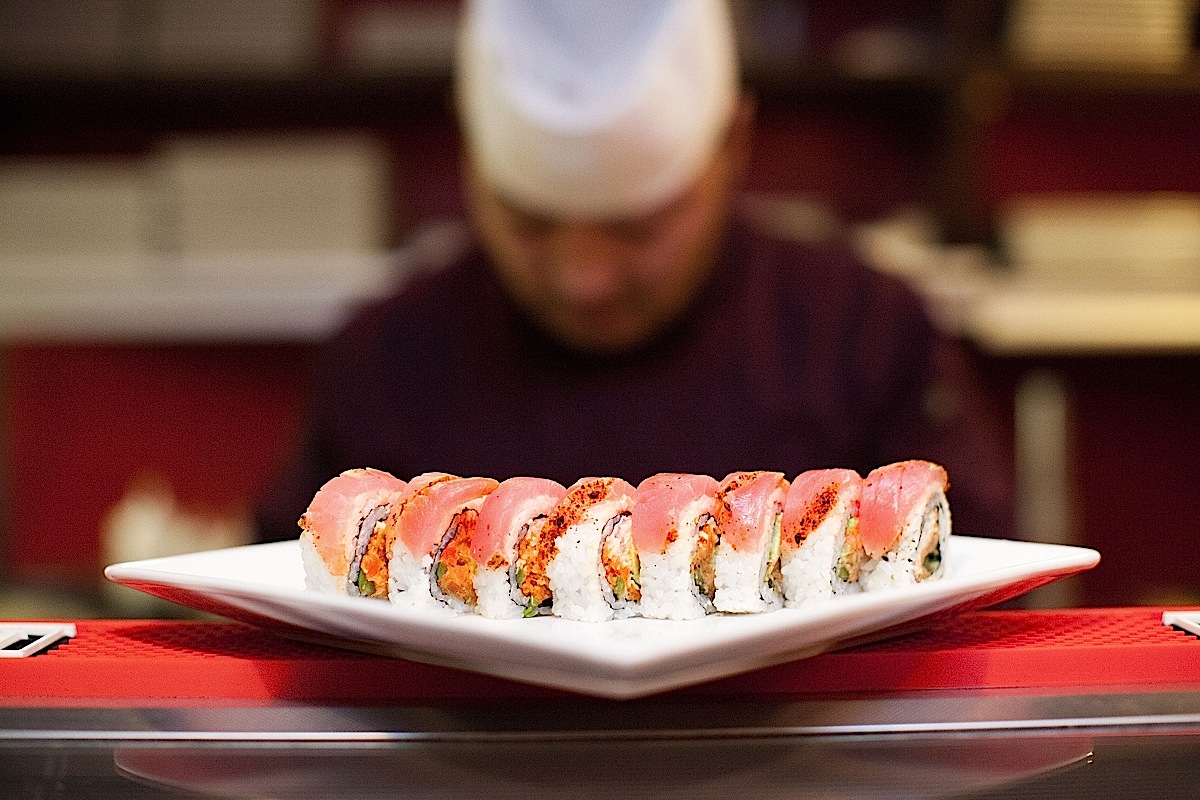 brand new
French bakery, Legrand
Bakery (left),
turning out fine, warm baguettes and croissants
just out of the morning's oven, along with French
pastries.
brand new
French bakery, Legrand
Bakery (left),
turning out fine, warm baguettes and croissants
just out of the morning's oven, along with French
pastries.
There’s Vietnamese food at Pho
Noodleville, Jamaican at Island
Blend Jerk & Grill, and a slew
of sushi restaurants.
Among the best of
these is Red Fin
whose crew is turning out some of the best
Nobu-style sushi I’ve tasted in the South. The
place is owned by Matt Wuhrman, who after
jumping out of airplanes with the 82nd
Airborne and 25 months of duty in Iraq, came
back to the U.S. in 2010, worked bars and
nightclubs, moved to and fell in love with
Greenville, and, with an investment partner,
opened Red Fin, with a night scene downstairs (below) and
family dining upstairs.
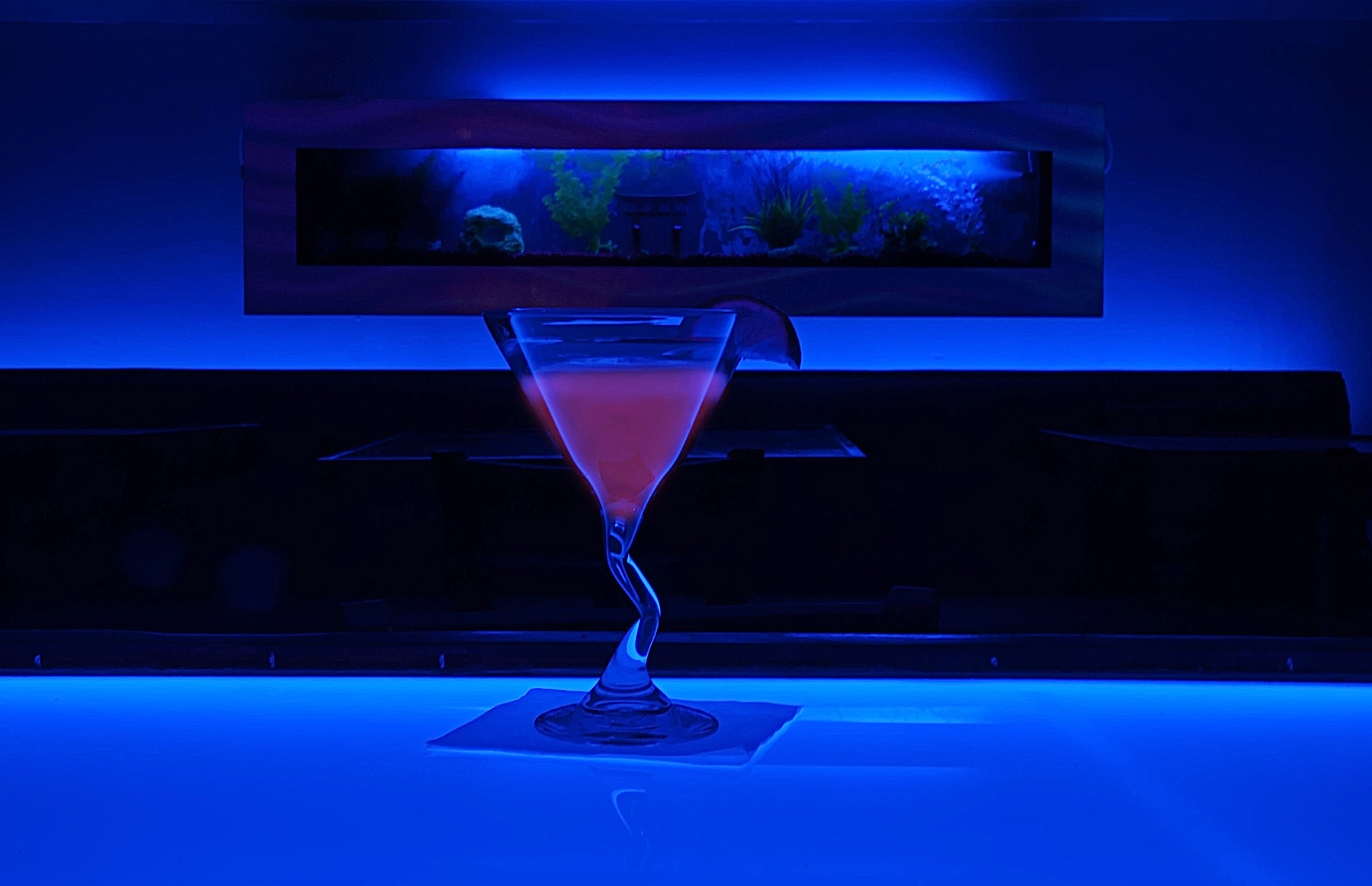 The menu
is long, starting with various appetizers and
salads, with about two dozen sushi and sashimi
items listed, though dependent on what's good
that day in the market. The sushi rolls (above) are
excellent, ranging from a tuna-avocado roll to
specialties like the "bagel roll" with smoked,
salmon, creamed cheese, and avocado. No one
should miss the dishes cooked on a searing stone
of Himalayan salt blocks that you cook on to
your degree of doneness, from beef carpaccio to
jumbo shrimp. There's a choice of any three
items for a remarkable $17.
The menu
is long, starting with various appetizers and
salads, with about two dozen sushi and sashimi
items listed, though dependent on what's good
that day in the market. The sushi rolls (above) are
excellent, ranging from a tuna-avocado roll to
specialties like the "bagel roll" with smoked,
salmon, creamed cheese, and avocado. No one
should miss the dishes cooked on a searing stone
of Himalayan salt blocks that you cook on to
your degree of doneness, from beef carpaccio to
jumbo shrimp. There's a choice of any three
items for a remarkable $17.
As in Charleston, this food
revolution has occurred very recently; even five
years ago chain eateries dominated the culinary
landscape. A catalyst
for change early on was the 15-year-old Soby’s
where Chef Shaun C. Garcia made a stand for
Southern traditions honed to a casual, fine dining
glow, as in his lobster mac & cheese 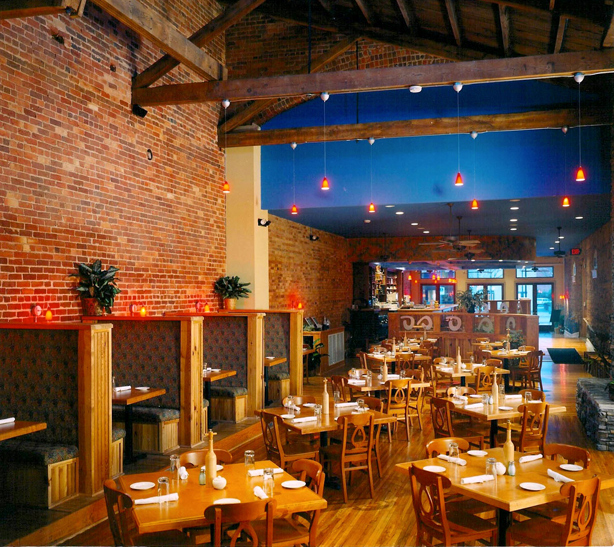 with truffled Parmesan streusel, and
his shrimp and grits with Low Country ham and
creamy wine sauce.
with truffled Parmesan streusel, and
his shrimp and grits with Low Country ham and
creamy wine sauce.
Devereaux's, owned by the same 301 Restaurant
Group that owns Soby’s, is located
in the historic American Cigar Factory, packed
nightly with an upscale crowd that comes for
contemporary American cuisine by Chef Spencer
Thompson, like grilled beef deckle with Brussels
sprouts and bacon lardons, and “deconstructed
s’mores” made with smoked chocolate that evoke the
campfire nights. His “Ultimate Menu” at $120
features ten “spontaneous courses.” The wine list
is more than 200 labels strong.
One
of the true innovators here—whom I,
in Esquire,
three years ago designated a “Chef to Keep Your
Eye On”—is Victoria Ann Moore at The Lazy
Goat, who brought into the city a wide array
of Mediterranean flavors and ideas, from
charcuterie of Jamón Serrano
Ibérico, Italian salami, and Spanish
country cheeses to dishes like succulent braised
pork belly with cannellini bean cassoulet and papas
bravas potatoes with fire onions, chorizo,
and saffron aïoli.
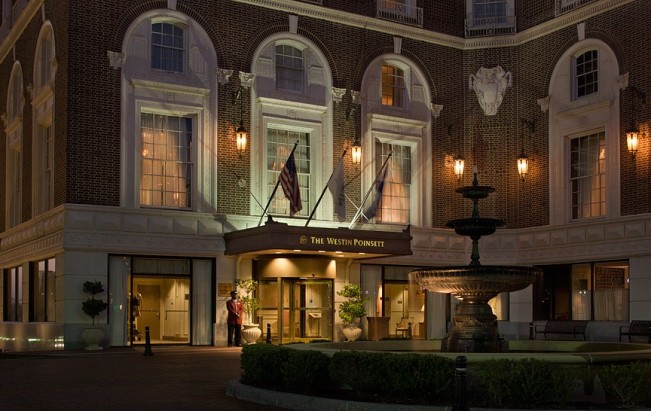 The
historic Westin Poinsett Hotel (below), where
every Greenville girl dreams of having her wedding
reception and where George Clooney filmed parts of
the movie “Leatherheads," has a new gastro-pub
called Nose
Dive, where Chef Joey Pearson does a
sensationally good housemade pretzel (below)
lavished with deviled crab and white cheddar that
goes well with the array of beers like RJ Rockers
Bell Ringer Ale made in Spartanburg, SC, and
Thomas Creek River Falls red made right in town.
The
historic Westin Poinsett Hotel (below), where
every Greenville girl dreams of having her wedding
reception and where George Clooney filmed parts of
the movie “Leatherheads," has a new gastro-pub
called Nose
Dive, where Chef Joey Pearson does a
sensationally good housemade pretzel (below)
lavished with deviled crab and white cheddar that
goes well with the array of beers like RJ Rockers
Bell Ringer Ale made in Spartanburg, SC, and
Thomas Creek River Falls red made right in town.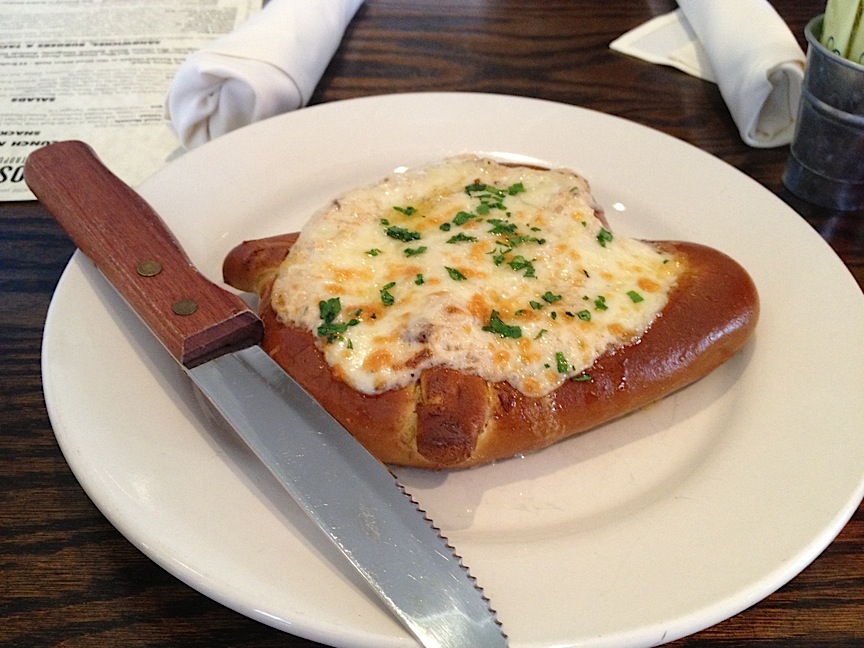
For brunch—go early, the place has a line
out the door by eleven AM—hit The
Green Room for the zesty cilantro-lime
remoulade-laced crab cakes, and don't  miss the
signature meatloaf (left) that never goes off the
menu. Start off with a bloody Mary or one of their
signature cocktails like the Baked Apple Martini
or Pomegranate Margarita, especially good with
those crabcakes, then consider the short rib mini
tacos with sushi rice, or the shrimp and grits
with spicy andouille sausage, diced tomatoes,
scallions and a seasoned shrimp broth.
miss the
signature meatloaf (left) that never goes off the
menu. Start off with a bloody Mary or one of their
signature cocktails like the Baked Apple Martini
or Pomegranate Margarita, especially good with
those crabcakes, then consider the short rib mini
tacos with sushi rice, or the shrimp and grits
with spicy andouille sausage, diced tomatoes,
scallions and a seasoned shrimp broth.
The city’s newest hotspot is Roost
on Main Street, a very handsome, expansive
restaurant with open kitchen (below) manned
by Chef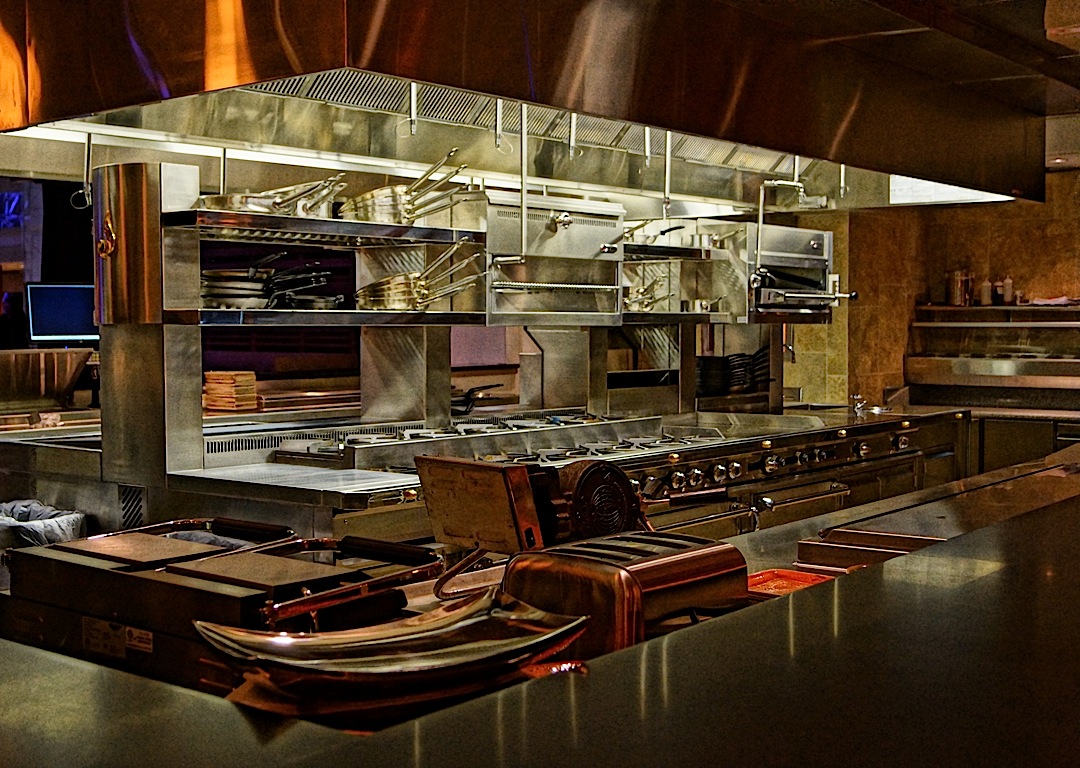 Trevor
Higgins, a wall of hanging country hams, and the
sleek Roost Bar. Being in a hotel,
that kitchen must do breakfast, lunch and
dinner, or as they call it here, supper.
The last might begin steamed buns packed with
bratwurst and kimchee, or blue crab beignets
drizzled with honey and a little bacon
powder. The wine list is
strong and building. Just about
everything is as locally sourced as possible, from
lettuce to pigs, from mustards to grits, and it
tastes that way in dishes like the yard bird with
biscuit dumplings.
Trevor
Higgins, a wall of hanging country hams, and the
sleek Roost Bar. Being in a hotel,
that kitchen must do breakfast, lunch and
dinner, or as they call it here, supper.
The last might begin steamed buns packed with
bratwurst and kimchee, or blue crab beignets
drizzled with honey and a little bacon
powder. The wine list is
strong and building. Just about
everything is as locally sourced as possible, from
lettuce to pigs, from mustards to grits, and it
tastes that way in dishes like the yard bird with
biscuit dumplings.
A ways
out of town is the area's best Italian restaurants
with an inherited name, Coal
Fired Bistro & Wine, that doesn't do
justice to the depth and breadth of the menu here.
A new director of operations has moved 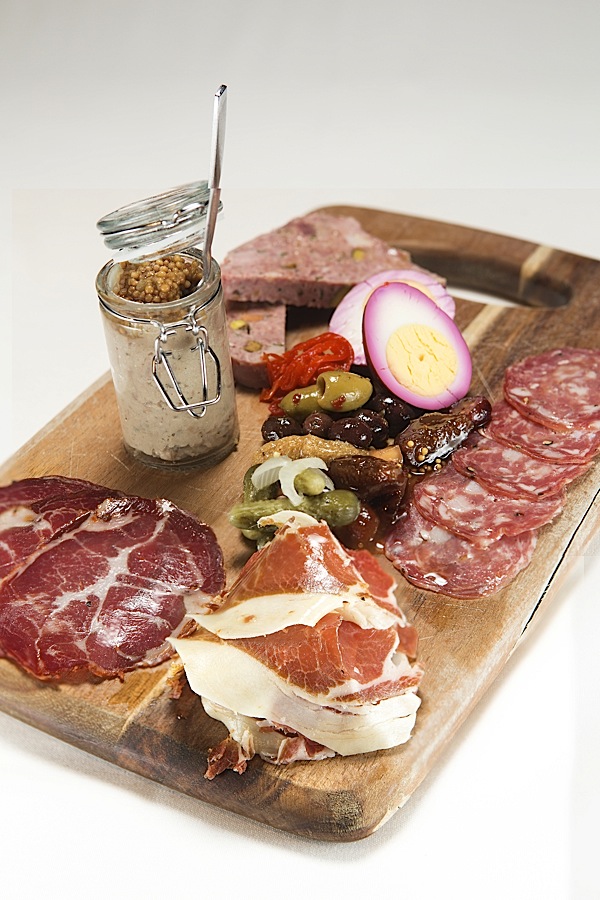 CFB&W away from
pizza and towards modern Italian cuisine and has
stocked the wine list with a good selection of
bottlings. I began with excellent pulled
mozzarella on toasted bruschetta with tangy
pickled shallots, a splash of balsamic, and
oven-dried tomatoes. The Butcher's Board (left) was
generously laid out with housemade sausages,
rillettes,
pâté, pickles and mustards. I
tried four pastas that night, and one was better
than the next. First up was tender mushroom
ravioli with Oregon truffle and lush mascarpone;
then sweet butternut squash agnolotti
with sage cream, brown butter, and Benton's
country prosciutto. Cappellini alla
carbonara used smoked guanciale,
Parmigiano-Reggiano cheese and Bethel Trails Farm
egg yolk to bind it into a glossy marriage of
flavors; last was tender tagliatelle with abundant
chunks of lobster, spinach, mushrooms, and
tarragon-scented brandy cream.
CFB&W away from
pizza and towards modern Italian cuisine and has
stocked the wine list with a good selection of
bottlings. I began with excellent pulled
mozzarella on toasted bruschetta with tangy
pickled shallots, a splash of balsamic, and
oven-dried tomatoes. The Butcher's Board (left) was
generously laid out with housemade sausages,
rillettes,
pâté, pickles and mustards. I
tried four pastas that night, and one was better
than the next. First up was tender mushroom
ravioli with Oregon truffle and lush mascarpone;
then sweet butternut squash agnolotti
with sage cream, brown butter, and Benton's
country prosciutto. Cappellini alla
carbonara used smoked guanciale,
Parmigiano-Reggiano cheese and Bethel Trails Farm
egg yolk to bind it into a glossy marriage of
flavors; last was tender tagliatelle with abundant
chunks of lobster, spinach, mushrooms, and
tarragon-scented brandy cream.
The 18-pounce bone-in strip
steak was highly recommended and I found out why
on first bite--it is a great piece of beef
impeccably cooked, with a peppery panzanella
salad, some strong Gorgonzola, olives, arugula,
and sweet onion, a very good buy for this quality
at $45.
Desserts were O.K., but
didn't quite match what preceded them.
One of the happiest and most popular
openings in town is Joe Fenten’s Dark
Corner Distillery (right), which
makes—unabashedly—handcrafted moonshine right on
the Main Street premises. You can do a tasting
there of bottlings named Cock Lightning, Hot
Mamma, Honeysuckle, and Green Villain Shines. The
store is named after Glassy Mountain Township
known for two centuries as Dark Corner, famous for
its moonshine culture. Their small batch bourbon
has been sold out for months now, with another
batch along any year now.
Charleston has a friendly fight
on its hands as Greenville grows in
sophistication, fueled by foreign investments that
makes the idea of my returning regularly to both
Southern cities a very delectable prospect.
by John Mariani
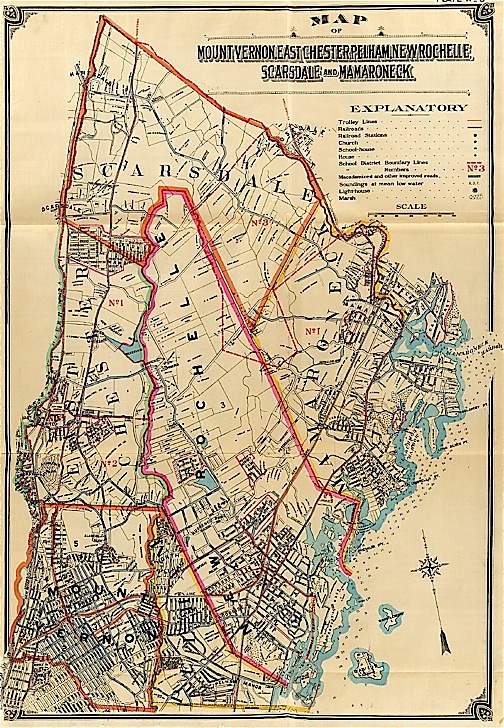
Westchester County teems with Italian restaurants, far too many with a cookie-cut menu of popular items done without much distinction from one another. Two that do soar beyond the rest are also among the best looking, and both reside in the County's most affluent bedroom community of Scarsdale.
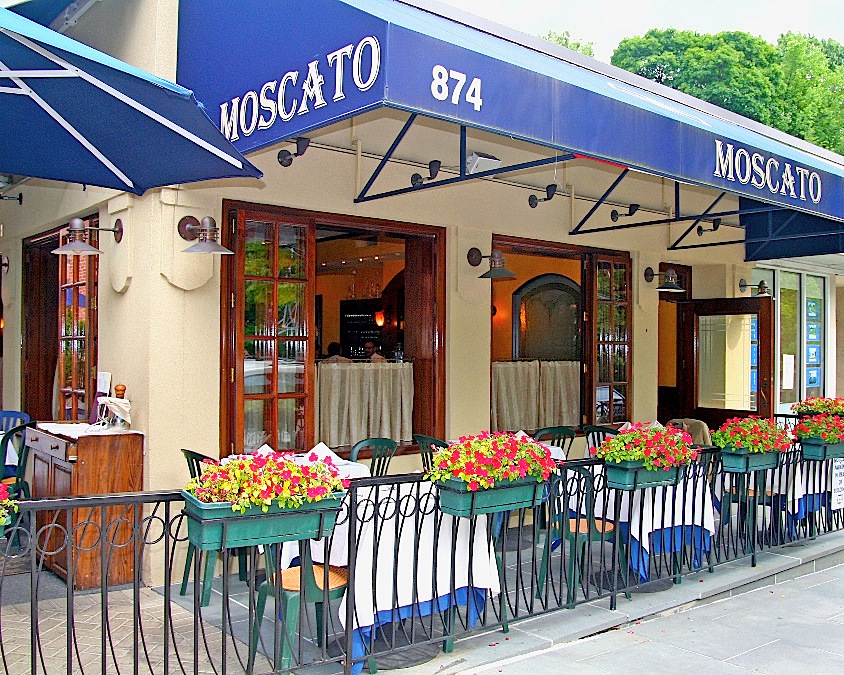 MOSCATO
MOSCATO
874
Scarsdale Avenue
914-723-5700
moscatorestaurant.com
Restaurateur
Mario Fava has had a longstanding reputation in
Westchester, first for Lusardi's in Larchmont,
and, since 2001, for Moscato's in Scarsdale. He
has never been one to skimp on service or
generosity, and his prices have remained
reasonable for a high quality of cuisine.
The atmosphere inside Moscato
is warm both in color and décor as in
greeting, and on any given night the majority of
guests are likely to be area locals; weekends are
always jammed. In good weather you can
happily dine al fresco on the patio, even if the
view of Scarsdale Avenue isn't quite the Via
Veneto.
There are all sorts of ways to
go at Moscato, since each food category offers a
wide choice; so you might gorge on antipasti,
which includes 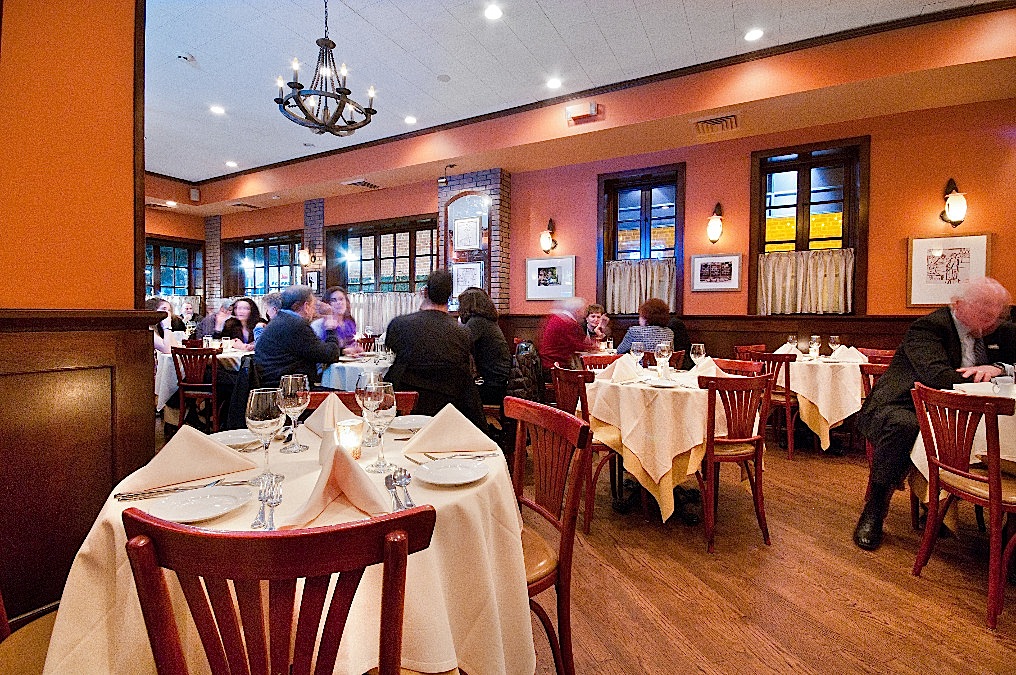 a very
good pizza of the day, or order a half portion of
pastas and a main course. My wife and I took
the recommendations of the management and dined
across the board, beginning with a generous
appetizer portion of grilled sausage over arugula,
endive, mushrooms, and sliced parmigiano drizzled
with truffle oil. Crespelle alla fiorentina--not
found often enough elsewhere--are rolled eggplant
crêpes with a rich ricotta filling, spinach,
and a light tomato sauce with melted fontina.
a very
good pizza of the day, or order a half portion of
pastas and a main course. My wife and I took
the recommendations of the management and dined
across the board, beginning with a generous
appetizer portion of grilled sausage over arugula,
endive, mushrooms, and sliced parmigiano drizzled
with truffle oil. Crespelle alla fiorentina--not
found often enough elsewhere--are rolled eggplant
crêpes with a rich ricotta filling, spinach,
and a light tomato sauce with melted fontina.
Among the pastas--a choice of
14 each night--are an array of shapes and styles,
from agnolotti
alla Moscato, filled with Parmigiano in a
chunky tomato sauce with peas and mint--a good
rendering of a Roman classic. 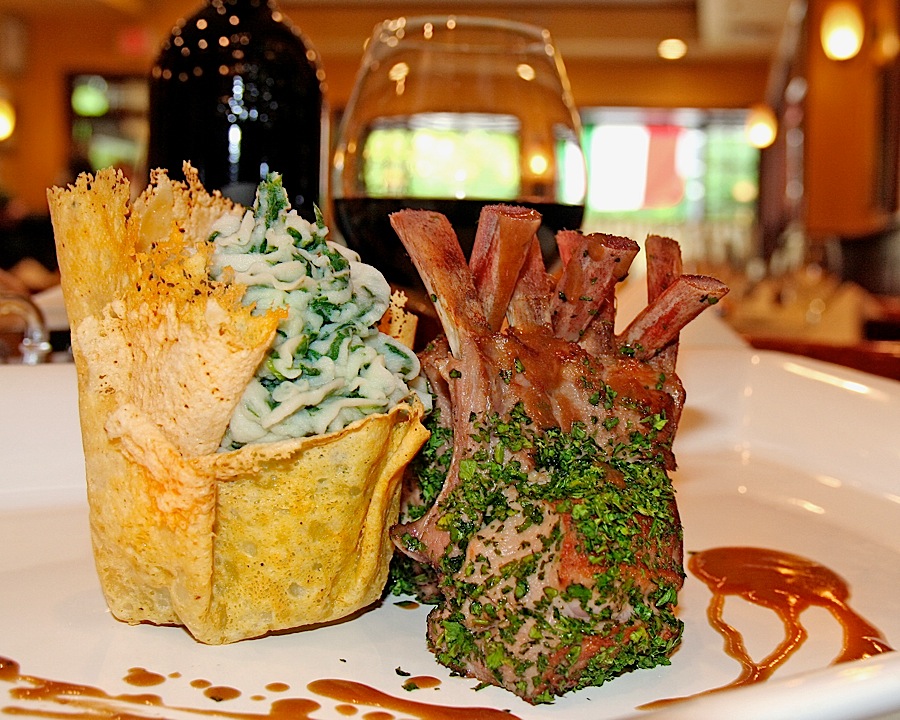 Trofie al pesto
is a fine example of lusty Ligurian cookery, and
Emilia-Romagna is just as well represented by the
excellent bolognese ragù mixed with wide pappardelle.
Trofie al pesto
is a fine example of lusty Ligurian cookery, and
Emilia-Romagna is just as well represented by the
excellent bolognese ragù mixed with wide pappardelle.
For our main courses we enjoyed
a fat veal chop with the added pleasure of figs,
in a hearty barolo and cognac sauce, served with
green beans, and a mixed grill of dorade,
scallops, and Arctic char over a bed of lightly
sautéed spinach and a touch of sweet
limoncello to give it depth.
The wine list
at Moscato should fulfill anyone's pleasure, and
the prices are reasonable.
It is easy
enough to enjoy Moscato for the food alone, but
you will most probably be won over as a regular by
the sense of hospitality here that makes you feel
like one the moment you arrive.
Moscato is
open daily for lunch and dinner. Antipasti
$13-$15, pastas (full portions) $17-$21, main
courses $22-$28.
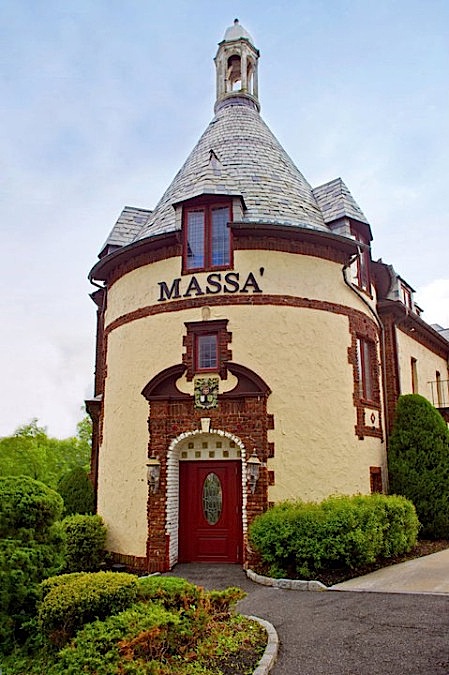 MASSA'
MASSA'
2 Weaver Street
914-472-4600
massascarsdale.com
The
building in which Massa' is housed has a long
history, first as a carriage house, then a train
station for a railroad that once ran through this
part of the county, a brothel convenient for those
getting on and off the train, and a series of
restaurants over the past 60 years, most of them
negligible. Yet it's a very charming
space--one of the most impressive in the region,
with vaulted cathedral ceilings and a
turret-like structure with echoes of
faux-Tudor and Bavarian in its lines.
Heathcote itself, named after colonial Lord of the
Scarsdale Manor, Caleb Heathcote, is now mostly an
intersection, and coming 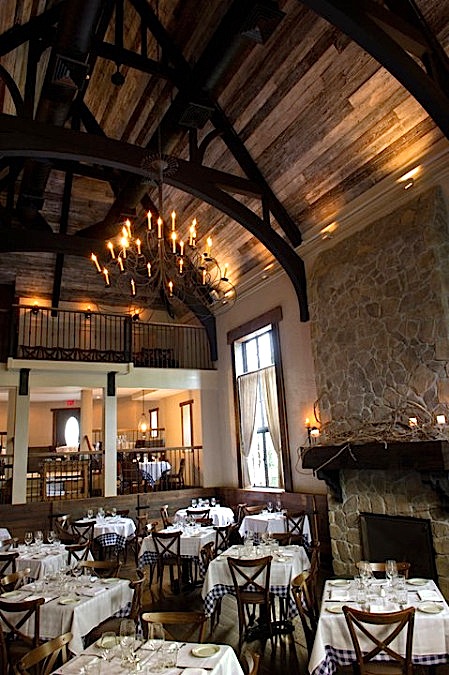 upon this
odd building is something of a fairy tale
surprise.
upon this
odd building is something of a fairy tale
surprise.
Father and son Pasquale, the executive chef,
and Francesco Coli renovated the interior
with century-old reclaimed wood salvaged from New
England barn houses, a floor-to-ceiling stone
fireplace and wood floors. From the outside it
doesn't much resemble the architecture of
the masserias,
farmhouses in Puglia from which the restaurant
takes its name, but inside it is one of the most
beautiful restaurants in the TriState
region. The touches of refinement add to the
pleasure of dining here, from two starched white
tablecloths to votive candles, which throws an
enchanting light once common to civilized
dining. A good basket of bread is set on the
table with olive oil for dipping; a plate of
complementary parmesan chunks is set before you,
along with olives. If you forgot your
eyeglasses, they will bring you a selection to
choose from. Your contentment is considered part
of the ambiance here.
On the second floor,
there is a popular wine bar with a small menu of
appetizers and a fuller menu available to go with
Massa's excellent wine list, with offerings by the
glass (50 selections), quartino, bottle and large
format. The bar makes signature infused vodkas for
their special cocktails. Try a couple; they're
very good.
Pasquale and chef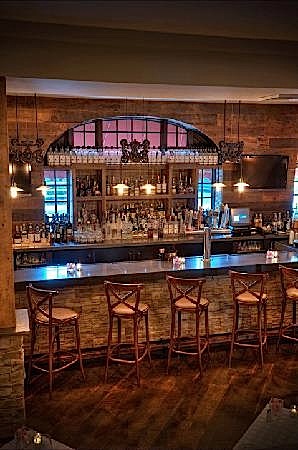 addictive,
if a little oily that night. Of the pastas
we tried, the pappardelle
with a very rich, chunky wild boar ragù was
outstanding--one of the best renditions of this
dish I've had. But I swooned over the
manicotti here, with a light tomato sauce, partly
out of nostalgia for a dish that once graced every
Italian menu but has long out of fashion, but also
out of the realization of how very delicious the
dish can be when made with a light hand and a
finely textured pasta. I would be hard put
not to order this again and again here.
addictive,
if a little oily that night. Of the pastas
we tried, the pappardelle
with a very rich, chunky wild boar ragù was
outstanding--one of the best renditions of this
dish I've had. But I swooned over the
manicotti here, with a light tomato sauce, partly
out of nostalgia for a dish that once graced every
Italian menu but has long out of fashion, but also
out of the realization of how very delicious the
dish can be when made with a light hand and a
finely textured pasta. I would be hard put
not to order this again and again here.
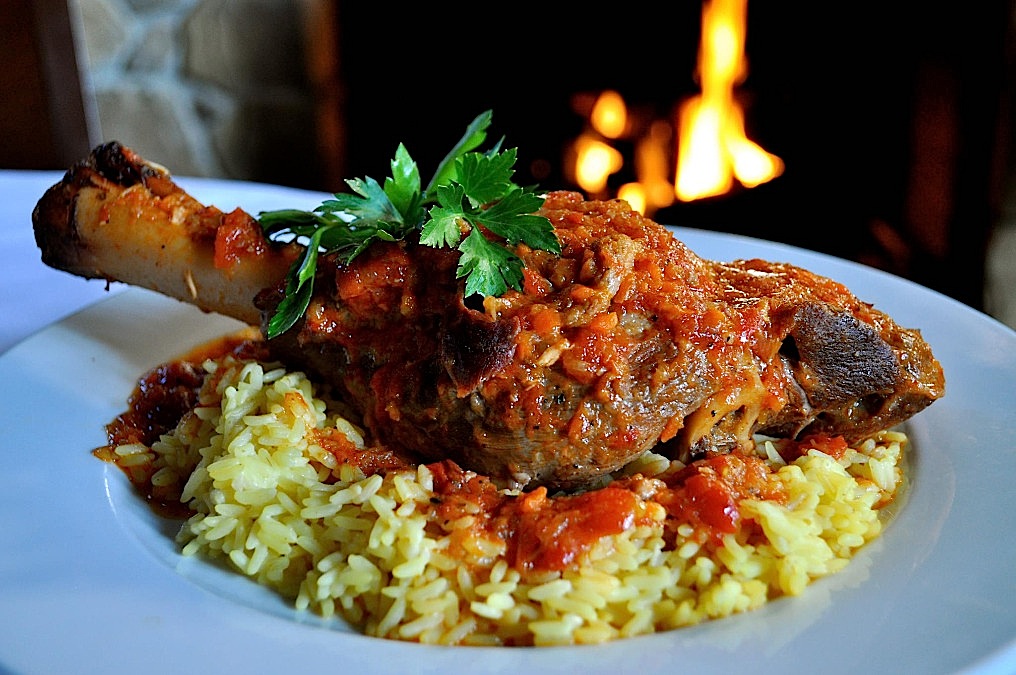 Nevertheless,
I can't argue with the quality of a huge, juicy
breaded veal chop topped with Parmigiano, melted
mozzarella and tomato sauce (the leftovers made
for a good lunch the next day). And what's not
to like about an American rack of lamb roasted
to perfect succulence, with a balsamic
reduction: again, the portion was gargantuan,
and, at $34, a steal.
Nevertheless,
I can't argue with the quality of a huge, juicy
breaded veal chop topped with Parmigiano, melted
mozzarella and tomato sauce (the leftovers made
for a good lunch the next day). And what's not
to like about an American rack of lamb roasted
to perfect succulence, with a balsamic
reduction: again, the portion was gargantuan,
and, at $34, a steal.
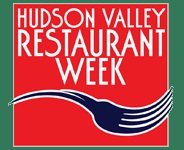
At the moment, Hudson Valley restaurant Week is in full swing,
until March 24th, featuring specially priced menus at scores of
restaurants from the south, east, west, and north of Westchester
County and up the Hudson River. For a list of participating restaurants
click the link above.
❖❖❖
Own Against the Best Bordeaux Wines
by John Mariani
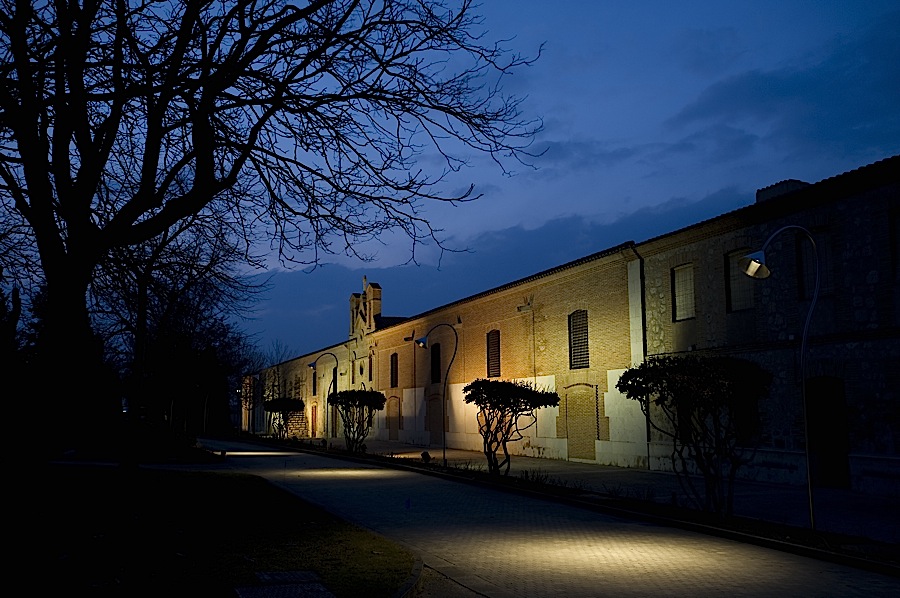
Vega Sicilia has been produced in the Ribera del Duero region of northern Spain for almost 150 years, primarily from tempranillo grapes, usually blended with cabernet sauvignon, merlot, and malbec.
The name is something of a mystery but has nothing to do with the island of Sicily. Many believe it refers to Saint Cecilia, revered in this part of Spain. The winery was founded by Don Eloy Lacanda y Chaves in 1864, who brought French varietals like cabernet sauvignon and merlot to the region.
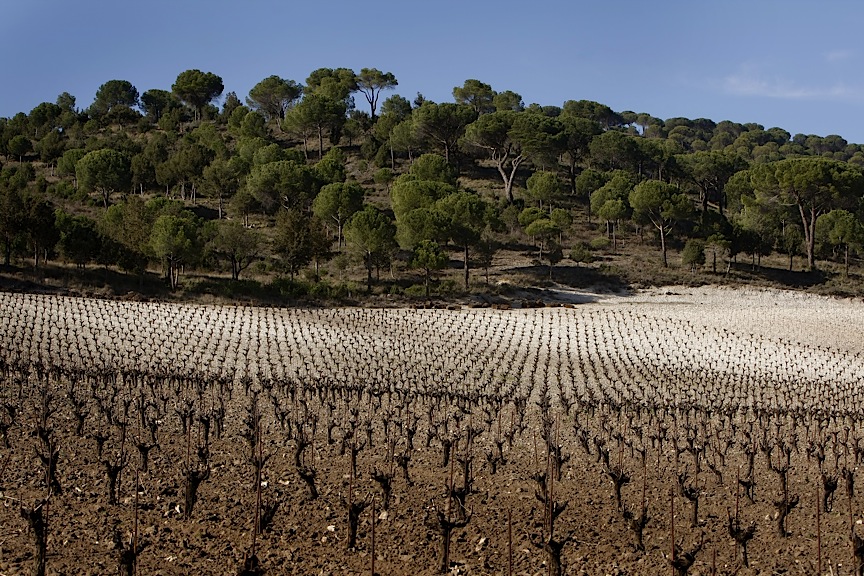 Tempranillo is a thick-skinned grape
that ripens early (the word temprano means “early”) and has
power and concentration without high alcohol, between
13.5 and 14 percent alcohol.
Tempranillo is a thick-skinned grape
that ripens early (the word temprano means “early”) and has
power and concentration without high alcohol, between
13.5 and 14 percent alcohol.The history of Vega Sicilia under various owners has had its ups and downs, but since being purchased by the Alvarez family in 1982, its eminence has been assured.
Last week, general manager Pablo Alvarez showcased a rare tasting of Vega Sicilia wines to the media and buyers at New York’s Mandarin Oriental Hotel. (The U.S. is the wine’s number one export market.) Alvarez noted that “it is always difficult to make our wines. Every year is different, and every year presents its problems,” noting that the temperature in the vineyards can hit 105° during the day, then drop 30° at night. In 2001 a frost killed off the entire crop of grapes in the vineyard.”
If the old wisdom is true that grapes must suffer to produce great wine, then Vega Sicilia overcomes hardships with admiral grace. “Our entire philosophy is to make a wine of great elegance,” said Alvarez.
In the tasting of six wines, this philosophy was borne out by silky, luscious wines with depth and vitality, even in old vintages.
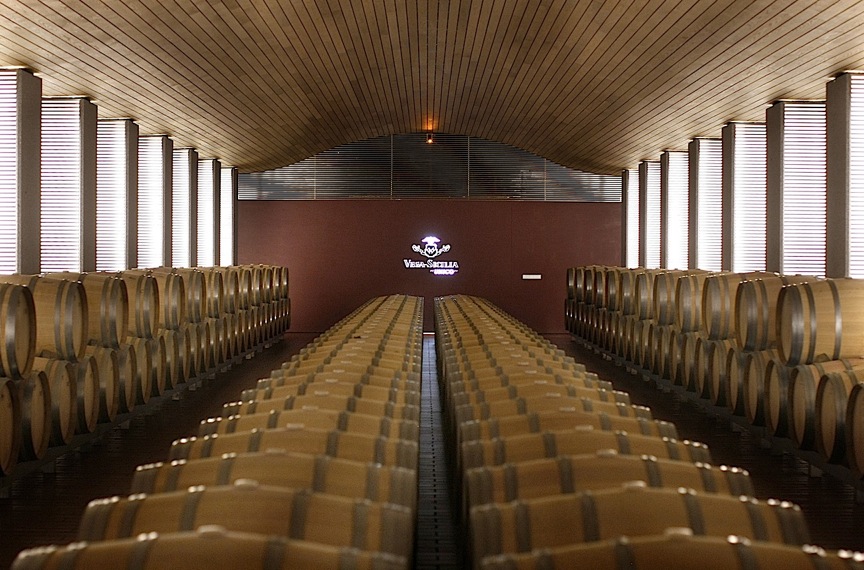 The wine
takes its time to mature and continues to do so for
decade, which is why the producer does not release a
vintage for at least ten years.
The wine
takes its time to mature and continues to do so for
decade, which is why the producer does not release a
vintage for at least ten years.The exception to this is their lighter, leaner Valbuena 5°, produced from somewhat younger vineyards and composed of tempranillo, merlot, and cabernet. The 2008 vintage I tasted was amazing for its depth and brightness, benefiting from a year of aging in new oak barrels, 3 months in older barrels, and 6 months in large oak vats. It is just being released this year and should retail for $160 a bottle.
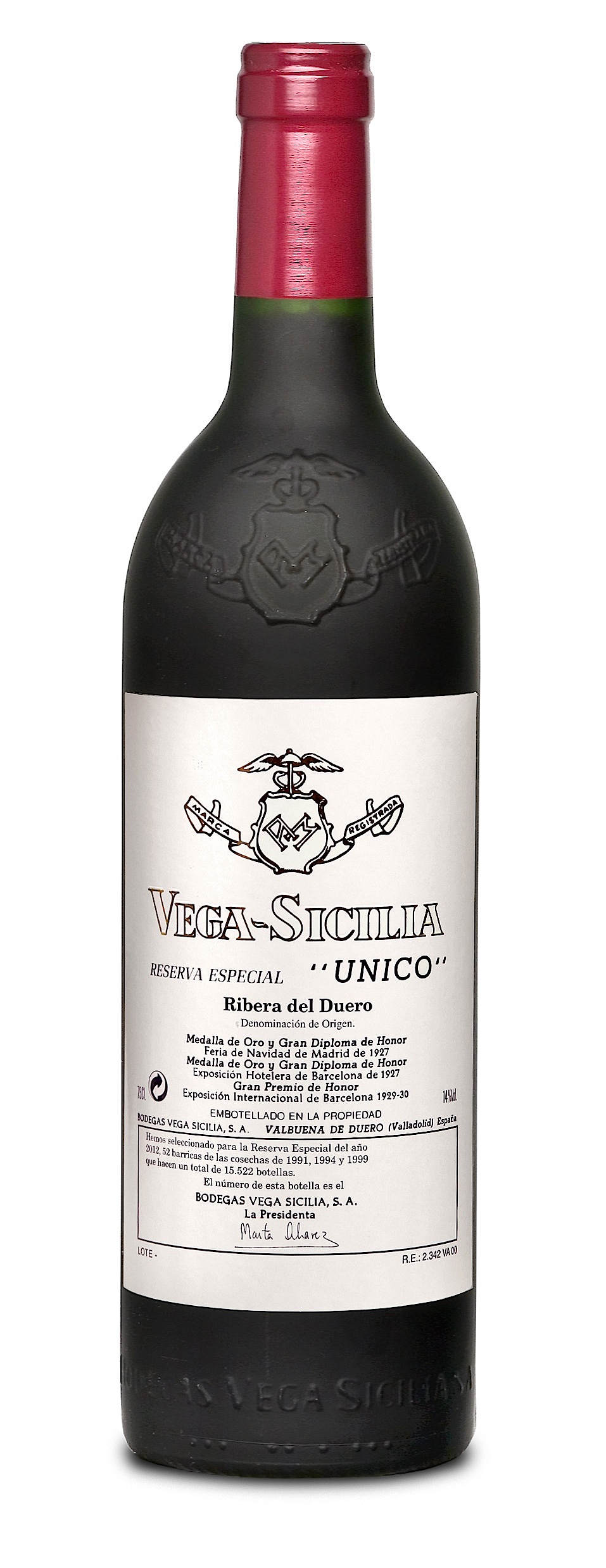 A 1998
Valbuena 5° has been in the market for a decade
and is no longer easy to find, but I located bottles
on line at about $140.
The wine has a huge bouquet with enormous, but
not plummy, fruit, long legs and a robust character
amazing for a 15-year-old “lighter” wine.
A 1998
Valbuena 5° has been in the market for a decade
and is no longer easy to find, but I located bottles
on line at about $140.
The wine has a huge bouquet with enormous, but
not plummy, fruit, long legs and a robust character
amazing for a 15-year-old “lighter” wine.We then tasted the Vega Sicilia "Unico," a Gran Reserva made from the vineyards oldest vines and not produced at all if the vintage is deemed unworthy of the label. The oldest we tasted, 1981, from a magnum bottle, revealed a slightly musty nose at first, but it blew off after a few minutes to reveal a wine still taut, not yet giving up its dimensional complexity. Its composition was 87 percent tempranillo and 13 percent cabernet. Released in 1998, it may still be found in magnum at $1000 to $1200, while the 50ml bottles available run between $300 to $550.
The 1994 vintage had more cabernet and merlot added to 80 percent tempranillo, and there was still plenty of grip and tannin, with a true tempranillo bite and a very dry finish. You can find it for about $500.
The youngster of the bunch was a 2004 vintage, with 87 percent tempranillo. It’s a very powerful wine though right now a little out of balance in its fruit, acid and tannins, a little jammy, but time will smooth it all out, maybe by next year when it is released.
The last wine is Vega Sicilia "Unico" signature Reserva Especial, a non-vintage blend of three wines from vintages that might date back decades. It is an artisanal, handcrafted wine, strictly allocated. The wine I tasted was made in 2009 from 1990, 1994, and 1996 vintages, and it showed a magnificent complexity, with a very pretty nose, plenty of strawberry-like fruit, impeccable structure throughout, and a thickness of texture whose power was sheathed in a velvet glove. It sells for about $500 in the U.S.
❖❖❖
MOST GRACIOUS RESTAURANT

ANNOUNCEMENT OF THE YEAR --NOT!
“Due to the intimate size of Atera we require prepayment at the time your reservation is confirmed. The price for the tasting menu is $165 per person before tax and an 18% gratuity, making the total prepayment at the time of confirmation $209.35. Wine, drinks, and any add-ons will be billed the evening that you dine. Once purchased, all sales are final, however your reservation is transferable.”--Atera Restaurant, NYC.
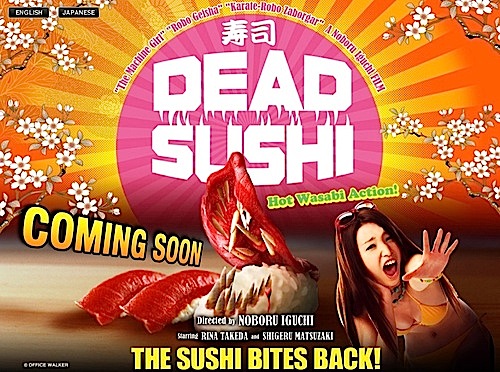 THE SEQUEL: "HIGH KICK
GIRL VS THE KILLER TOMATOES!"
THE SEQUEL: "HIGH KICK
GIRL VS THE KILLER TOMATOES!"
"Dead Sushi," a
"Japanese splatter action comedy" about "flying killer
sushi monsters," will
premiere at the Alamo Drafthouse's
Fantastic Fest film festival in Austin,
TX. The movie stars Rina Takeda as a killer-sushi
battling "high kick girl."
Any of John Mariani's
books below may be ordered from amazon.com.
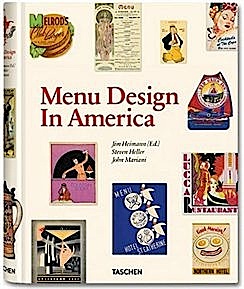 |
My latest book, which just won the prize for best book from International Gourmand, written with Jim Heimann and Steven Heller, Menu Design in America, 1850-1985 (Taschen Books), has just appeared, with nearly 1,000 beautiful, historic, hilarious, sometimes shocking menus dating back to before the Civil War and going through the Gilded Age, the Jazz Age, the Depression, the nightclub era of the 1930s and 1940s, the Space Age era, and the age when menus were a form of advertising in innovative explosions of color and modern design. The book is a chronicle of changing tastes and mores and says as much about America as about its food and drink.
“Luxuriating vicariously in the pleasures of this book. . . you can’t help but become hungry. . .for the food of course, but also for something more: the bygone days of our country’s splendidly rich and complex past. Epicureans of both good food and artful design will do well to make it their coffee table’s main course.”—Chip Kidd, Wall Street Journal.
“[The menus] reflect the amazing craftsmanship that many restaurants applied to their bills of fare, and suggest that today’s restaurateurs could learn a lot from their predecessors.”—Rebecca Marx, The Village Voice. |
"Eating Italian will never be the same after reading John Mariani's entertaining and savory gastronomical history of the cuisine of Italy and how it won over appetites worldwide. . . . This book is such a tasteful narrative that it will literally make you hungry for Italian food and arouse your appetite for gastronomical history."--Don Oldenburg, USA Today. "Italian
restaurants--some good, some glitzy--far
outnumber their French rivals. Many of
these establishments are zestfully described
in How Italian Food Conquered the World, an
entertaining and fact-filled chronicle by
food-and-wine correspondent John F.
Mariani."--Aram Bakshian Jr., Wall Street
Journal.
"Equal parts
history, sociology, gastronomy, and just
plain fun, How Italian Food Conquered the
World tells the captivating and delicious
story of the (let's face it) everybody's
favorite cuisine with clarity, verve and
more than one surprise."--Colman Andrews,
editorial director of The Daily
Meal.com. "A fantastic and fascinating
read, covering everything from the influence
of Venice's spice trade to the impact of
Italian immigrants in America and the
evolution of alta cucina. This book will
serve as a terrific resource to anyone
interested in the real story of Italian
food."--Mary Ann Esposito, host of PBS-TV's
Ciao
Italia. "John Mariani has written the
definitive history of how Italians won their
way into our hearts, minds, and
stomachs. It's a story of pleasure over
pomp and taste over technique."--Danny Meyer,
owner of NYC restaurants Union Square Cafe,
Gotham Bar & Grill, The Modern, and
Maialino.
|
 |
 |
 |
 |
 |
 |
 |
 |
 Everett Potter's Travel Report:
Everett Potter's Travel Report: 
 Eating Las Vegas
is the new on-line site for Virtual Gourmet
contributor John A. Curtas., who since 1995
has been commenting on the Las Vegas food
scene and reviewing restaurants for Nevada
Public Radio. He is also the
restaurant critic for KLAS TV, Channel 8 in
Las Vegas, and his past reviews can be
accessed at KNPR.org.
Click on the logo below to go directly to
his site.
Eating Las Vegas
is the new on-line site for Virtual Gourmet
contributor John A. Curtas., who since 1995
has been commenting on the Las Vegas food
scene and reviewing restaurants for Nevada
Public Radio. He is also the
restaurant critic for KLAS TV, Channel 8 in
Las Vegas, and his past reviews can be
accessed at KNPR.org.
Click on the logo below to go directly to
his site.

Tennis Resorts Online: A Critical Guide to the World's Best Tennis Resorts and Tennis Camps, published by ROGER COX, who has spent more than two decades writing about tennis travel, including a 17-year stretch for Tennis magazine. He has also written for Arthur Frommer's Budget Travel, New York Magazine, Travel & Leisure, Esquire, Money, USTA Magazine, Men's Journal, and The Robb Report. He has authored two books-The World's Best Tennis Vacations (Stephen Greene Press/Viking Penguin, 1990) and The Best Places to Stay in the Rockies (Houghton Mifflin, 1992 & 1994), and the Melbourne (Australia) chapter to the Wall Street Journal Business Guide to Cities of the Pacific Rim (Fodor's Travel Guides, 1991).


MARIANI'S VIRTUAL GOURMET
NEWSLETTER is published weekly. Editor/Publisher: John
Mariani.
Contributing Writers: Christopher Mariani, Robert Mariani,
John A. Curtas, Edward Brivio, Mort Hochstein,
Suzanne Wright, and Brian Freedman. Contributing
Photographers: Galina Stepanoff-Dargery,
Bobby Pirillo. Technical Advisor: Gerry McLoughlin.
© copyright John Mariani 2013
